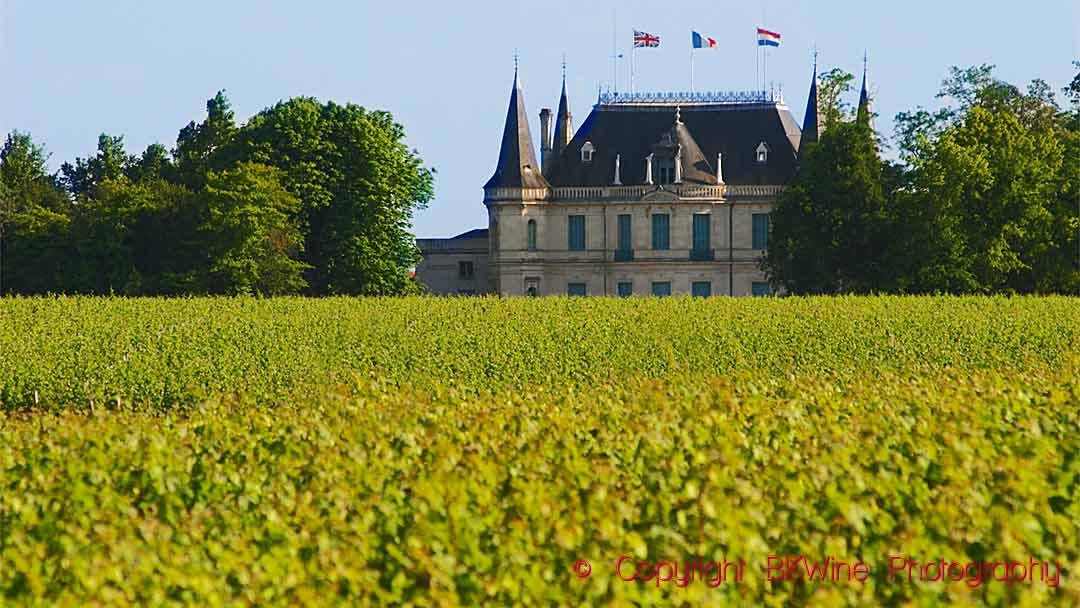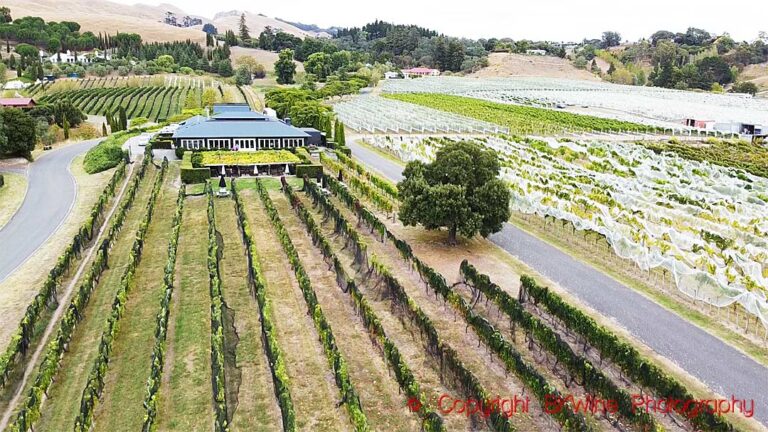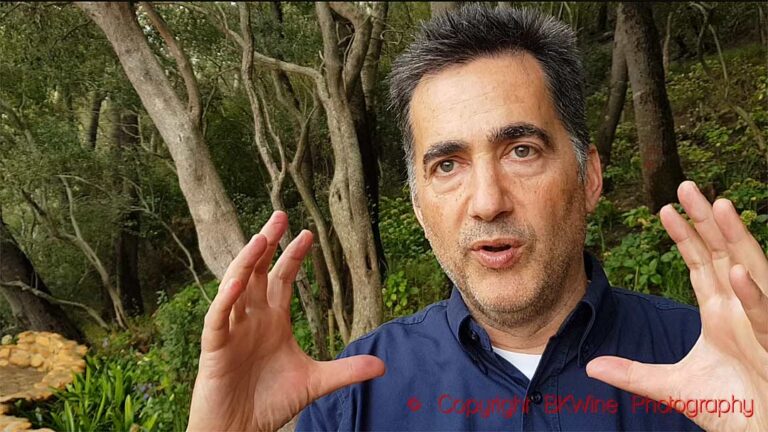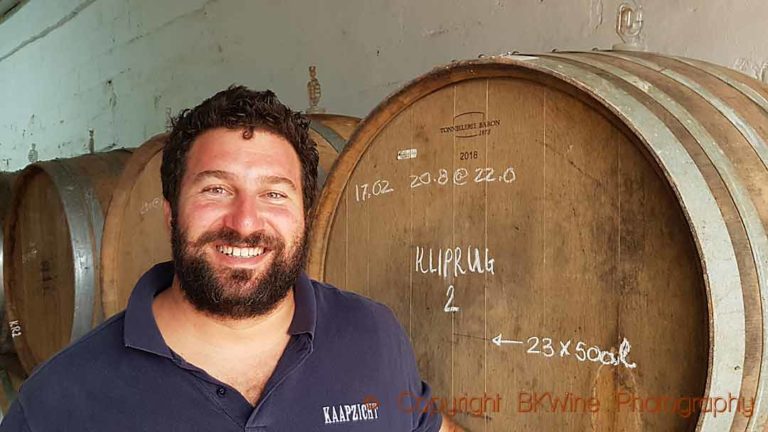The Bordeaux primeurs “circus” is famous. Hundreds of buyers and journalists gather in Bordeaux in April to taste the latest vintage. Almost two years before it will be released on the market. It is a market place for some of the most famous – and most expensive – wines of Bordeaux. Château Palmer in Margaux is one of them. But they do it with a twist. On September 23, they launched their now 10-year-old vintage. It’s “primeurs ten years later”. Every year they put aside about half of their production and let it rest in the cellar. When it has reached the – for a wine – respectable age of 10 years, they release it to the market. They just started selling the Château Palmer 2011. I met with the managing director of the chateau to taste and to discuss.
Château Palmer is one of the fairy-tale-looking palaces along the route des châteaux in Bordeaux. Driving north into Margaux, you can see the beautiful building on the right-hand side. Right behind it, Château Margaux is hiding. Palmer’s history goes back at least to the 18th century when, under a different name, supposedly it was enjoyed in the royal chateau of Versailles. But from its current name you can tell that it was a foreigner that brought fame to the chateau. Foreign ownership of wine estates is certainly not a new thing.
This is a longer version of an article published on Forbes.com.
Made famous by a foreigner
In 1814 Charles Palmer acquired the chateau. He was an English major-general and Member of Parliament and aide-de-camp to the Prince Regent. But at the end of his life he was penniless “due to the costs involved in running his vineyards” (according to Wikipedia). Today the fortunes of the chateau have rather changed.
In the (now fairly dusty) 1855 classification of the wines of Bordeaux, it was honoured as a third growth, a very respectable place. If anything, it has gained in prestige and quality since.
2011, an unusual vintage
I tasted the new “launch”, the 2011, with the manager of the chateau, Thomas Duroux. “2011 was a very peculiar year. It was a warm spring and summer, so harvest was unexpected early”, he explained. “But at Palmer, the vintage was even more marked by what happened on June 4”, he continued. “A hailstorm struck the vineyards”. Hail can be devastating. It can destroy not only the leaves but also the grapes and the wood, with long-term consequences.
But at Palmer the hail came at a “good” time, or as good as can be. It was after the flowering but before the fruit had really started to develop. Had it been earlier or later, it could have been catastrophic. Hail during flowering could mean that no flowers will develop into fruit, and if the grapes are already well-developed, they can be severely damaged and become useless.
As it were, at Chateau Palmer in 2011, it was the young shoots that took the hit. Much of the young branches were destroyed, but the tiny buds survived. The result was that the vine now had to focus on rebuilding itself and put most of its energy into creating new shoots and branches and less on developing the grapes. “This meant that we had an exceptionally small harvest in 2011, only around 20 hectolitres per hectare”, Thomas Duroux explained. That is less than half of a typical harvest yield.
The good side of this was that the quality of the grapes was excellent. With such a small yield, the juice was more concentrated than usual. This was even more pronounced due to the hot summer.
In a typical year, Chateau Palmer uses three grape varieties: Approximately equal parts of cabernet sauvignon and merlot plus a dash of petit verdot.
Merlot gives fruit and aromas; cabernet gives structure, tannins and black-currants. Petit verdot is used in small quantities by some estates, often from a few percentages up to 10 per cent. It can give some added fresh acidity and structure thanks to its quite high tannins. However, in 2011, the cabernet sauvignon at Palmer was so solid and concentrated that they decided not to use any of the petit verdot in their main wine, the Château Palmer. Hence, in 2011, it was simply a blend of merlot and cabernet sauvignon.
Tasting the 2011
So, what about the wine?
It was an absolute pleasure to taste the Château Palmer 2011; it was a delicious wine. The colour was deceptively dark; It might lead you to expect a very dense wine. But no, instead it was a very elegant, almost aromatic wine. There were masses of fruit on the nose, classic cassis and a little floral. A hint of oak, but not too much. On the palate, it did have quite a lot of power but retained its elegance with very refreshing fruit. The tannins are very present but also lovely and smooth. A long finish, held up by the excellent structure of the tannins—a lovely example of concentrated yet elegant Margaux wine.
So on September 23 it was the “second” not-so-primeur release of their 10 year old wine.
The demise of the primeurs?
The whole primeur campaign is sometimes put in question by media today as a bit arcane. I asked Thomas if he had seen a decline in the importance or interest in the primeurs in recent years. “Not at all”, was his clear answer. “It tends to be Anglo-Saxon media and trade who say this. But when it was uncertain if there would be a primeur ‘campaign’ due to covid, some came back to us and said ‘please don’t cancel the primeurs, it is very important for our business’.
In fact, wines from other regions are joining in, coming here, and are increasingly traded on ‘la place’ in Bordeaux.”
Biodynamics
Palmer is unusual not only in that they keep a big part of the production for release ten years later. The other unusual thing with Palmer is that it is managed according to biodynamic principles. Not many estates in Bordeaux do so, although it has become more popular in recent years.
Thomas explained the background: “We at the chateau had tasted some delicious biodynamic wines and became interested in how biodynamics worked. The agricultural practices seemed a bit strange, and most of the people who did it were also unusual, long hair and all.” But the quality of the biodynamic wines had made the Palmer team curious. So in 2009, they selected one of their merlot plots and worked half of it with “conventional” methods and the other half with biodynamic practices.
“It wasn’t a catastrophe; we were happy to have a harvest the first year”, Thomas says jokingly. In fact, it worked so well that only four or five years later, they had converted all the vineyards to biodynamic. Some years, with challenging weather, it does carry a risk of getting more vine diseases in the vineyard. But the big advantage is that, according to Thomas, it brings out the character of the vineyard and of each plot much better in the wine.
All the more reason to try one of their now-released 2011.
Travel
The very best way to discover and explore the wines of Bordeaux is to travel there in person. You can come on a wine tour to Bordeaux and taste many magnificent chateau wines with BKWine.
Travel to the world’s wine regions with the wine experts and the wine travel specialist.
Magnificent wine tours to explore the best wines. BKWine wine tours.












